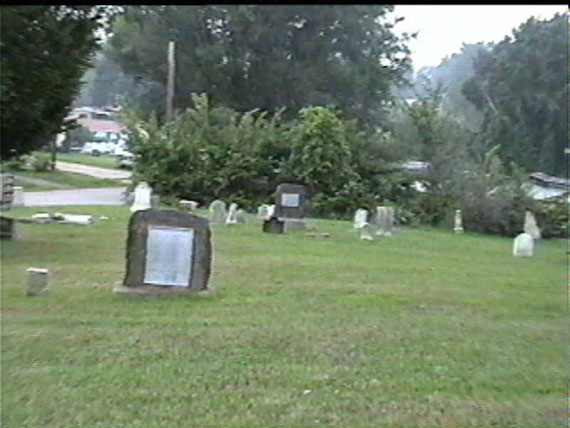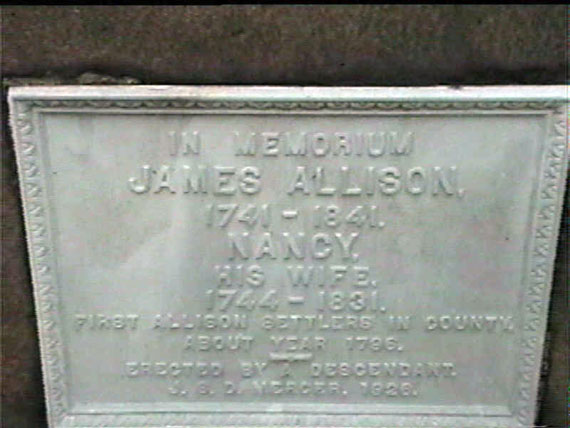West Virginia
Locust Hill Cemetery
Locust Hill Rd., Chester
Locust Hill Cemetery was organized in 1900 and incorporated in 1904 by Robert Allison, Richard Allison, H. W. Allison, Thomas R. Cunningham and J. C. Cunningham.
Twenty acres of a former cornfield along Locust Hill Rd. were purchased and developed into a common cemetery for area residents.
The association of lotholders has five trustees, headed by Noami Koenig, with Joan L. Hart as secretary-treasurer. Two fulltime caretakers are employed.
The cemetery records show some 4,900 graves.
Shadow Lawn Memorial Gardens
Sixth St. Rd., Newell
Around 1,800 graves are in the tract.
Nessly Chapel Cemetery
Route 2 south of Newell
A small band of Protestants organized the Nessly Chapel, named after the early Nessly family which erected a stone building was erected in 1826?
Jacob Nessly, a Revolutionary War soldier, in 1785 moved his wife and seven children from Lancaster, Pa., to a cabin he built along the Ohio River on Tomlinson's Run. He also constructed a blockhouse for protection from Indians, and a government blockhouse was later built on his grounds
Nessly was of Mennonite stock which had fled Swiss Lorraine early in the 18th Century, and had farmed for several years in Pennsylvania. At his new home he planted fruit trees and raised grain crops, and eventually owned some 8,000 acres along the river a mile back extending five miles north to opposite Wellsville.
In 1826 at the urging of his wife Elizabeth, he built a non-denominational chapel from local stone. Replacing the "old stone church" later was another stone structure.
After his wife's death, Nessly moved across the Ohio River to reside with a daughter, leaving the farm in the hands of Jacob DeSellem, a grandson. Jesse Sisson, a zealot reformer of the Methodist Church, persuaded DeSellem to deed the church to the reform group, Methodist Protestants. These dissenters believed in a strong laity and weak clergy.
To legalize the deed within the then Commonwealth of Virginia, the papers were taken to Jacob Nessly across the river, and he was placed on a sled which was driven into the river - jurisdiction of Virginia -- where he signed the deed transfer.
Thus, the chapel may have been the first Methodist Protestant church in the nation. Jacob Nessly died at Port Homer Dec. 3, 1832, aged 80.
The original church was dedicated by the Rev. George Brown. Members included Mr. and Mrs. John DeSellem, Mr. and Mrs. Jacob Nessly, Mr. and Mrs. Nathan Thayer, Elizabeth Brenneman, James Brown and Jesse Sisson..
Some 265 graves were on file around 1994. Among those buried is an 80-year-old man born in slavery who died in 1933. At one time, cast iron pillars and a gatecrest stood at the entrance
Flats Cemetery
Settlers from eastern Pennsylvania, New Jersey and Connecticut organized a Presbyterian congregation in 1794 at Pughtown. Called the Flats Church, it later became the Fairview Presbyterian Church.
The original log church was located a mile south of Pughtown. It was replaced by a frame structure in 1808, and a red brick building was erected in 1839,.seating 600. The Fairview church was built in 1890, and the old church torn down.
Some 600 graves were listed in 1995. Among those Juried are a Confederate soldier Henry Lewis and Capt. Isaac Cullen, a Revolutionary War officer.

A portion of Flats Cemetery

Additional information not in the Glenn Waight article regarding Flats Cemetery
The Allison Surname is a common surname in the tri-state area. Those with the Allison surname played a big role in the founding of Chester, W Va. and held prominent positons throughout the area. In the 1950s the East Liverpool and Vicinity Bell Telephone book listed over 100 Allison surnames.
The above picture shows a tombstone located in Flats Cemetery. James Allison had been born in Maryland. He was a officer in the American Revolution, on the American side. He was captured by the British and was a POW of the British. After the war he and his family moved to the panhandle of what was then Virginia, now W Va. Tnere are several tombstones bearing the Allison Surname in Flats Cemetery, many if not all decendents of James and Nancy Allison or their decendants. It might very well be possible that most with that surname in the tri-state area came from that that first Allison family in Hancock County.
Union Cemetery
The Union Chapel of the Methodist Protestant Church was built in 1835 at Freeman's Landing north of New Cumberland? There were 877_graves listed in 1995,
New Cumberland Cemetery
Records showed some 3,200 graves in the mid-1990s.
Pennsylvania
Georgetown Cemetery
Georgetown, Pa.
One of the most historic buriaLgcQunds in this area is Georgetown Cemetery, located on a hill overlooking the Ohio River south of the hamlet.
Two victims of early Indian attacks were among the first people interred.
James Clark, who built the first house at Smiths Ferry, was ambushed in 1792 while bringing his cows from the bottomlands. His wife, hearing the shooting, carried her child across the river to the blockhouse at Georgetown where he was buried.
A Blackmore slain by savages was also interred there in 1795, his grave marked by a still legible handmade stone.
According to John Finley, head of a committee in charge, the site was originally named "Grandview Cemetery from the impressive view of the valley. The grounds were first provided by Benoni Dawson who founded and laid out the village which was an early settlement on the wilderness road from Washington, Pa., to Lake Erie. Georgetown's site on the Ohio River placed it at the border of Indian country.
Without private or government funds to maintain it, the grounds began to deteriorate, and vandals caused damage. Finley and others turned to clearing the six acres, and installed a locked gate for security. A charter was also obtained for incorporation.
A $6,000 endowment was provided by a man in 1950, and further donations increased funding which now underwrites sufficient care. A landscaping firm helps with maintenance.
Lack of records prevents full count of graves, but Finley, a retired banker, says there are thousands of graves, and burials continue from families around here and of descendants residing elsewhere in the nation.
Christier Cemetery
Shippingport
A private pioneer family cemetery lies in the midst of a modern power plant complex at Shippingport.
The Christier Cemetery, containing the body of a Revolutionary War veteran, stands on a hilltop overlook the Ohio River within the Beaver Valley Power Station just east of the Shippingport Bridge.
The tract is part of the original Christier 500 plus acres given to Michael Christier for service with a Virginia unit during the Revolutionary War. He along with John Christier, a War of 1812 veteran, are buried there.
Also interred are three boys who drowned in the Dhio River while traveling in the area and whose families could not be located.
The cemetery was discovered in the 1970s hidden by brush after the tract was purchased for the Beaver Valley Power Station. The utility preserved it.
This site is the property of the East Liverpool Historical Society.
Regular linking, i.e. providing the URL of the East Liverpool Historical Society web site for viewers to click on and be taken to the East Liverpool Historical Society entry portal or to any specific article on the website is legally permitted.
Hyperlinking, or as it is also called framing, without permission is not permitted.
Legally speaking framing is still in a murky area of the law though there have been court cases in which framing has been seen as violation of copyright law. Many cases that were taken to court ended up settling out-of-court with the one doing the framing agreeing to cease framing and to just use a regular link to the other site.
The East Liverpool Historical Society pays fees to keep their site online. A person framing the Society site is effectively presenting the entire East Liverpool Historical Society web site as his own site and doing it at no cost to himself, i.e. stealing the site.
The East Liverpool Historical Society reserves the right to charge such an individual a fee for the use of the Society’s material.